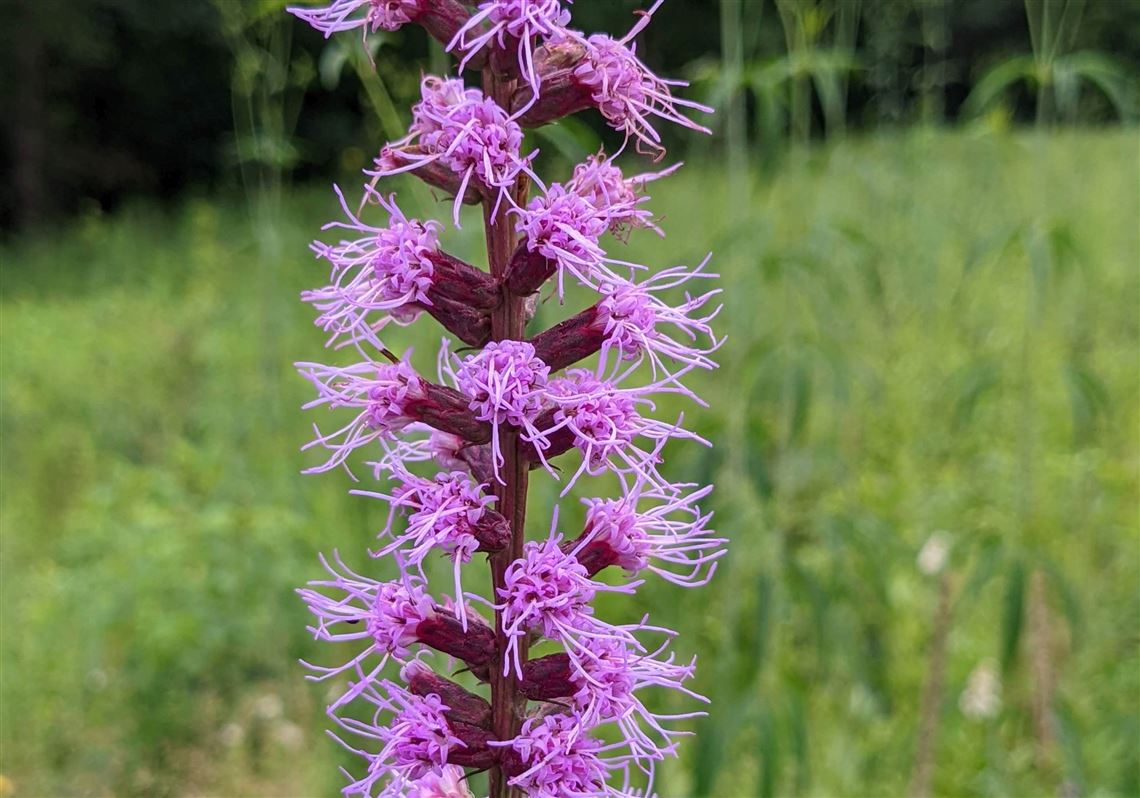Perennials are key for adding year-round interest to the garden.
Whether classic statement plants like hostas or peonies, or groundcovers that enhance plantings better than bark mulch, many gardens have an array of perennial plants. Garden centers feature new options every year, but a few exciting “discoveries” have come up short as garden specimens, whether because of reduced hardiness, or the opposite dilemma, aggressiveness to the point of invasiveness.
If you have perennials in your garden that should be replaced because of their invasive ways, take a look at these native plants to take their place.
Ox-eye daisy (Leucanthemum vulgare) is an introduced plant that grows throughout North America. It looks nearly identical to the cultivated Shasta daisy (Leucanthemum x superbum), but with smaller flowers and narrower, lobed leaves. If you have a patch of ox-eye daisies, consider pulling them and adding an equally tough native species, either Virginia mountain mint (Pycnanthemum virginianum) or blunt mountain mint (Pycnanthemum muticum).
Mountain mints produce silvery bracts of small white flowers and thrive in full sun. The leaves smell minty when crushed, discouraging browsing by deer. Pollinators covet mountain mint, and a planting will be alive with bees and butterflies.
You may have inherited or purchased purple loosestrife (Lythrum salicaria), an especially bad actor in the landscape. An upright plant with deep pink flowers, it is adaptable and grows in damp and marshy areas, but is also happy in normal sunny garden settings. Its flowers are arranged on long spikes, with leaves that turn bright red in autumn. It prefers full sun and is a favorite nectar plant for monarch butterflies.
A trip along highways and waterways in late summer demonstrate the invasiveness of purple loosestrife. Stands of native cattails have been completely displaced by this invasive species, with broad swaths of purple flowers dominating the view in late summer. Native alternatives include prairie blazing star (Liatris pycnostachya), with 3- to 5-foot-tall spikes of rosy-purple flower heads on stiff stems.
Another tall pink native is queen of the prairie (Filipendula rubra). Plumy flower heads comprised of tiny five-petaled flowers sit atop stems up to 6 feet tall. It will thrive in full sun or light shade.
Swamp milkweed (Asclepias incarnata) is another option; it’s a butterfly magnet with clusters of pale rose flowers. Happy in damp areas, it will tolerate drier conditions, too, once established.
A plant unlikely to have been cultivated in the landscape but frequently found in local gardens is lesser celandine (Ficaria verna). In the buttercup family, it is an ephemeral groundcover that blooms in bright yellow in March and April. When the flowers begin to fade, small bulblets are apparent above ground and then it dies back to only underground tubers in late summer. Leaves reappear in late winter, making removal more practical in late winter/early spring. It is classified as a Class B noxious weed, meaning that it is widely established in the state.
A good native alternative is green-and-gold or goldenstar (Chrysogonum virginianum). Sweet yellow flowers bloom in spring and sporadically into summer. The velvety deep green foliage stays low, yet is dense enough to crowd out most weeds. It’s a terrific groundcover for average soil in both full sun and part shade.
Bishop’s weed or goutweed (Aegopodium podagraria) was a popular plant decades ago and the variegated form is often offered as a pass-along plant. If someone wants to share divisions with you, just say no! A dense groundcover with wide clusters of tiny white flowers that bloom in June, goutweed spreads via rhizomes and prevents other species from establishing.
A good replacement for goutweed in shady spots of the garden is Canadian wild ginger (Asarum canadense). Velvety heart-shaped leaves colonize shady areas. Tolerant of a wide range of soils, its flowers are close to the ground, attracting ants that pollinate the plant.
Sadly, a plant still offered in the trade is chocolate vine (Akebia quinata). It was recently added to the state’s noxious weed list. Once commonly available in nurseries and widely used in the landscaping industry, akebia has not withstood the test of time. Plants can climb to 30 feet, with attractive clusters of chocolate-scented, reddish-brown flowers.
Eliminate chocolate vine in your landscape and try native Dutchman’s pipe (Aristolochia macrophylla). It has huge heart-shaped leaves that turn pale yellow in autumn. The flowers are yellow-green with purple spots and shaped like a pipe.
This vine is the sole larval food source for pipevine swallowtail butterflies. It is easily trained to a wire or trellis and could be used to shade a porch. It tolerates low-nutrient soil and moderate drought.
If you are looking to add native plants to your landscape, it is wise to start by replacing herbaceous ornamentals that have a deleterious impact on our environment, including these commonly found species.
Dianne Machesney is a Penn State Master Gardener. This volunteer program supports the outreach mission of Penn State Extension and provides research-based information on best practices in sustainable horticulture and environmental stewardship. Information: alleghenymg@psu.edu or 412-482-3476
First Published: August 11, 2023, 9:30 a.m.
Updated: August 11, 2023, 7:44 p.m.
















